Main menu
Common skin conditions

NEWS
Join DermNet PRO
Read more
Quick links
Author: Dr Amy Stanway, Dermatology Registrar, Nottingham, United Kingdom, 2005. Update December 2020
Diffuse hereditary palmoplantar keratodermas are the palmoplantar keratodermas that diffusely involve most of the palm and sole and are caused by a genetic abnormality. Several family members may be affected. Some types of syndromic keratoderma are associated with abnormalities of internal organs.
They may be inherited from one affected parent (autosomal dominant inheritance) or from both parents, who are generally unaffected (autosomal recessive inheritance). The responsible gene has been identified for many of these keratodermas.
Diffuse hereditary palmoplantar keratodermas present in early childhood with redness of the palms and soles. The palms and soles gradually become thicker and develop a yellowish, waxy appearance. There is a clear cut-off between affected and unaffected skin, and the edge of the thickening is often red. This is usually obvious by the age of 3 to 4 years.
Increased sweating (hyperhidrosis) is quite common and there is a tendency to develop fungal and bacterial infections of the feet.

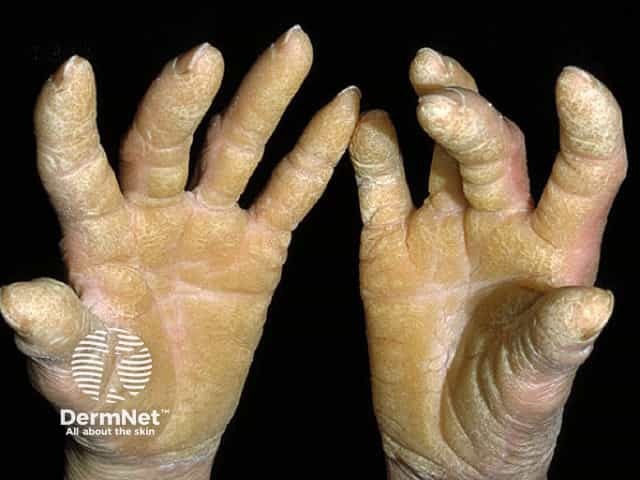
Diffuse palmoplantar keratoderma
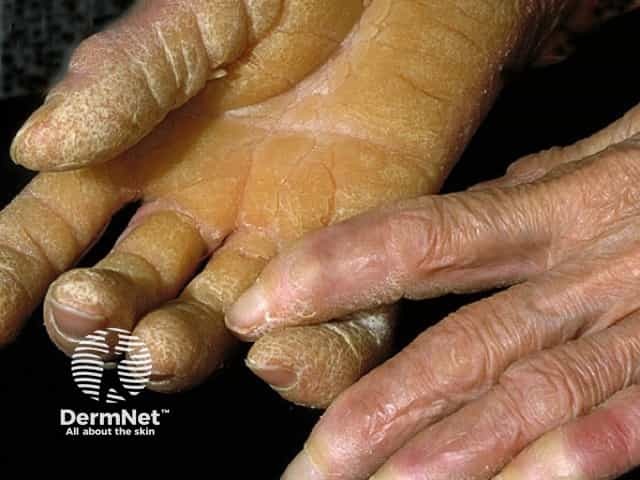
‘Transgradient’ is a term used to describe the extent of the skin thickening:
The non-transgradient diffuse inherited keratodermas are known as Vorner disease (MIM 144200) and Unna-Thost disease. They are inherited as autosomal dominant conditions. There are no associated abnormalities. They look the same but have slightly different findings on skin biopsy.
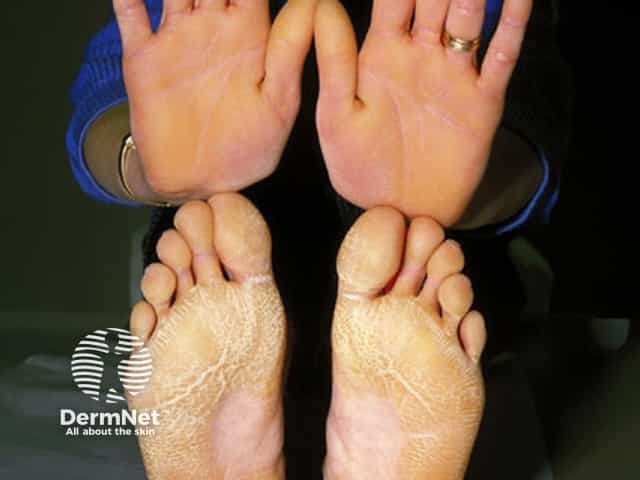
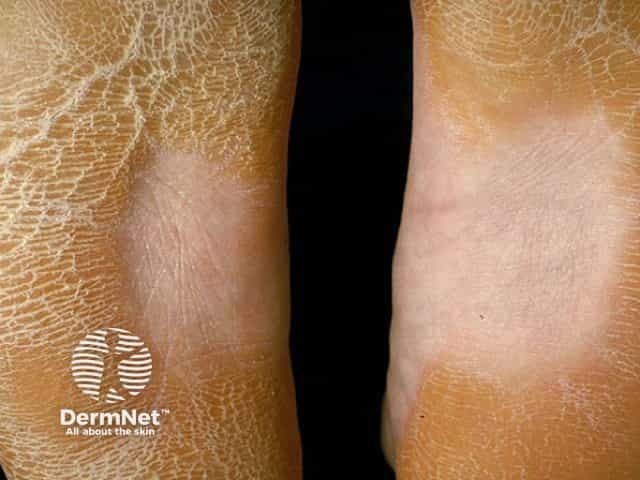
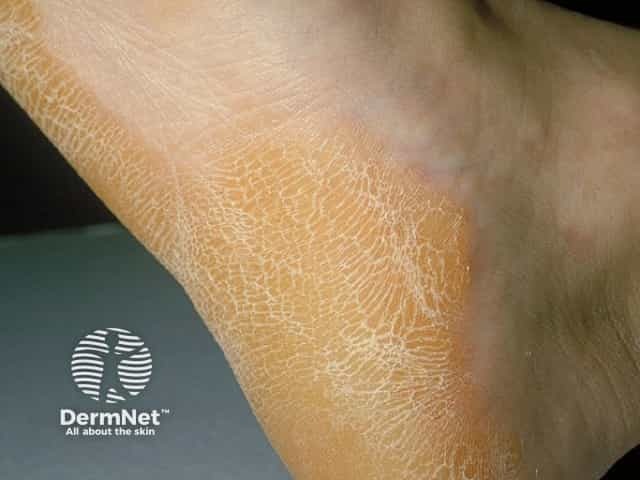
Olmsted syndrome |
|
Mal de Meleda |
|
Nagashima-type |
|
Huriez syndrome |
|
The following treatments soften the thickened skin and make them less noticeable.
Diffuse plamoplantar keratodermas persist for life and may be passed on to the next generation.